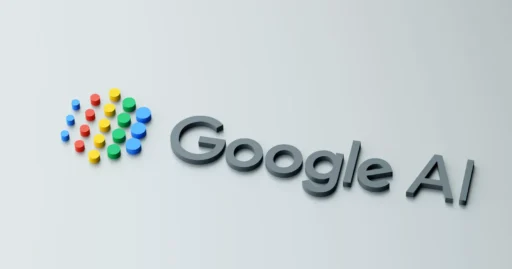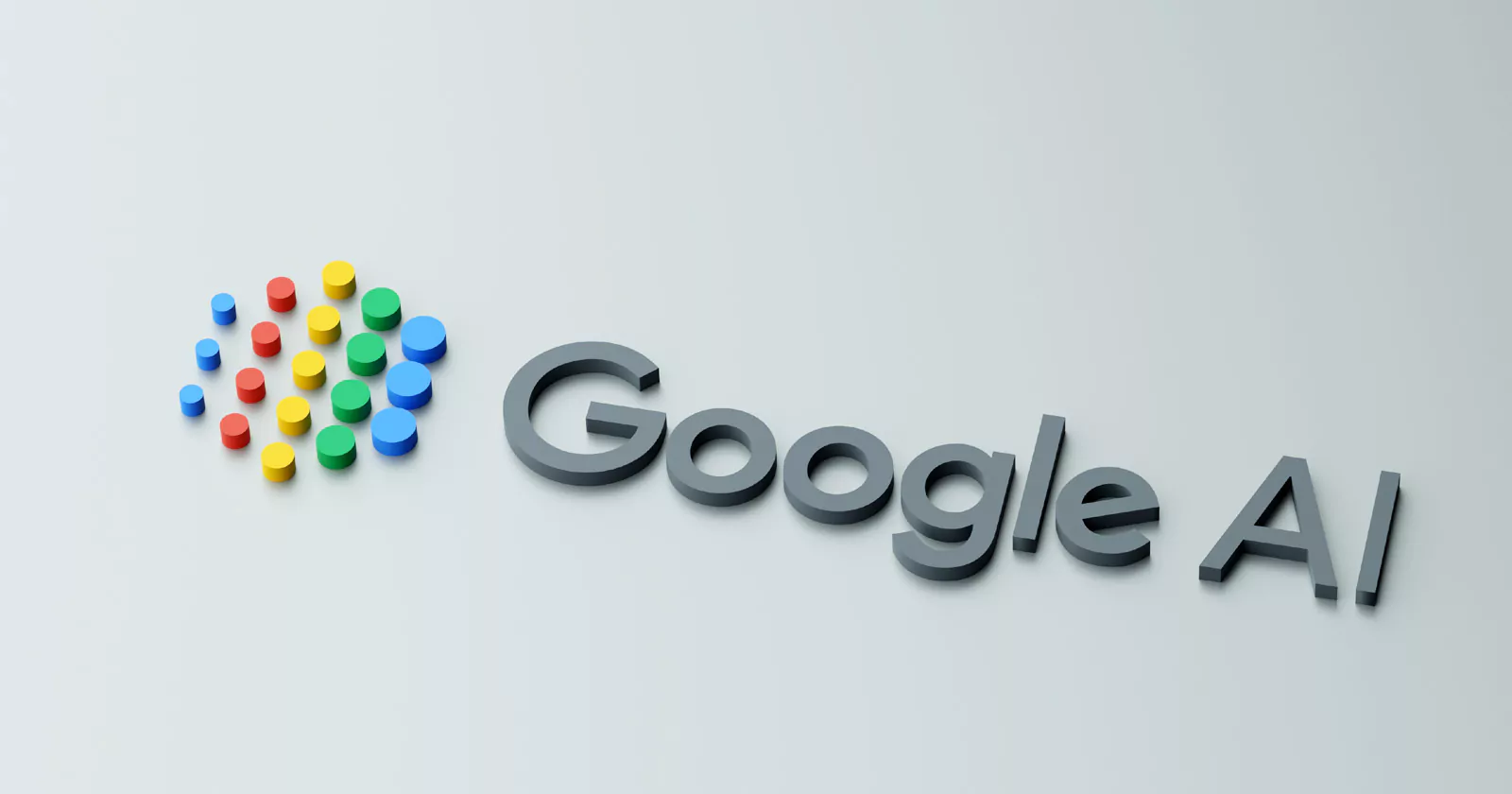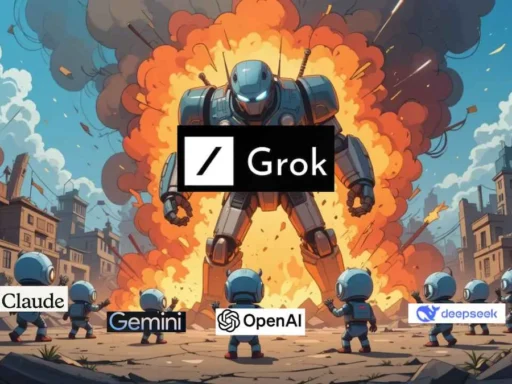Ever find yourself wondering how Google’s latest artificial intelligence magic is shaping your everyday life—or maybe even your job? You’re definitely not alone. With headlines touting everything from smarter search to robots learning new tricks, it can feel like we’re living in a sci-fi novel. But let’s be real: between the hype and actual impact, there’s a lot to unpack.
I’ve spent years breaking down complex tech shifts (and sometimes fighting my own gadgets), so I get that folks want more than buzzwords. What matters most? Understanding which advances are actually making things faster, smarter, and maybe even safer—for both businesses and regular people alike.
In this series on Google AI breakthroughs, you’ll get an insider’s take on where all those wild innovations are headed—minus the confusing jargon or overblown promises. Whether you geek out over code or just care about using tools that make life easier, let’s dig into what matters now—and what might change tomorrow.
Large Language Models And Generative Ai Changing The Game
- Gemini 1.5 Pro: According to Google DeepMind reports, this model can juggle up to one million tokens of context at once. Picture summarizing entire books or parsing through intricate video transcripts—all within a single prompt.
- Efficiency Focus: Power doesn’t have to mean waste. Techniques like Mixture-of-Experts (MoE) architecture allow these mega-models to run smoother while sipping less energy—a win for both speed demons and sustainability buffs.
- PaLM 2 Upgrade: PaLM 2 takes multilingual understanding up several notches, enabling better translation services and coding support—fueling tools like Bard (now Gemini).
But why does any of this matter beyond nerd bragging rights?
| Breakthrough | Impact Example |
|---|---|
| Text Generation & Code Creation | Bard/Gemini delivers natural replies; Codey writes reliable scripts alongside developers. |
| Translation & Reasoning Skills | Powers instant cross-language communication in Search results and Docs. |
| Medical Knowledge Synthesis | Med-PaLM summarizes clinical notes with surprising accuracy—potential game-changer for healthcare pros. |
Let me share a quick story: A developer friend recently tested out Codey for her startup project. Instead of wrangling documentation late into the night, she offloaded repetitive code snippets straight to the AI—cutting build time in half and freeing herself up for creative work she actually enjoys.
And it isn’t just coders feeling the benefits:
- A recent Forbes study found that nine out of ten business leaders see AI as essential to future strategy—not something reserved for data scientists alone.
- The upgrades behind-the-scenes improve everyone’s experience—from shopping online with smarter recommendations to finding health info explained in plain English.
- If you use Google Search regularly (let’s face it: who doesn’t?), LLM-powered enhancements help surface relevant information faster—even handling tricky queries that once left users frustrated.
Of course, none of this comes without challenges:
-
- Misinformation remains a hot topic; Google invests heavily in safety measures like reinforcement learning from human feedback (RLHF) and watermarking generated content.
-
- The ethics team is also focused on limiting bias—so answers don’t accidentally reinforce harmful stereotypes or misinformation threads running rampant online.
If you’re curious about how Google’s focus on responsible development shapes these advancements—and want more details on how they’re tackling tough problems head-on—you’ll find insightful updates directly from their official sources at this anchor text: Google AI Blog.
So next time your phone seems almost too clever when answering “What did I search last Thursday?” remember: There are teams tirelessly pushing boundaries so our digital helpers feel less robotic…and maybe even funnier than your favorite coworker.
The Evolution Of Gen Ai Adoption In Everyday Life
Just five years ago, most people would never have guessed they’d ask an AI assistant to draft emails or brainstorm recipes based on whatever’s wilting in their fridge drawer today. Fast forward—generative AI models aren’t just hidden away behind research lab doors anymore; they’re quietly helping millions streamline workflows at home and at work.
And adoption shows no sign of slowing down as business leaders recognize the competitive edge these breakthroughs bring—from slashing customer service response times with smarter chatbots to developing global products powered by seamless translation capabilities.
It feels like we’re barely scratching the surface—but if there’s anything certain about technology trends, it’s that yesterday’s “wow” quickly becomes tomorrow’s baseline expectation.
Stay tuned—we’ll dive deeper into computer vision magic next time!
Large Language Models and Generative AI: The New Power Players
Ask anyone in the tech world right now—how is Google making waves with AI? The answer almost always circles back to their rapid-fire advances in large language models (LLMs) and generative AI. It’s not just about chatbots spouting off trivia; it’s bigger, smarter, and a lot more useful than your average digital assistant.
Consider this: Google’s Gemini 1.5 Pro can juggle up to a million tokens in its context window. What does that mean for the rest of us? Imagine dropping War and Peace, an entire codebase, or hours of video into an AI’s lap and having it make sense of everything on the fly. Suddenly, research projects that used to eat up days can happen over lunch.
The focus isn’t only on pure brainpower either. Efficiency is front and center. Thanks to techniques like Mixture-of-Experts (MoE) architectures and model distillation, Google’s LLMs are running leaner—using less computing power while still packing a punch. For businesses nervous about carbon footprints or server bills ballooning out of control, that’s real peace of mind.
PaLM 2 made headlines by boosting multilingual skills and reasoning chops. Whether you’re asking Bard (now rolling under the “Gemini” name) for cooking tips in Spanish or using it as your code buddy through Codey, you’re tapping into some serious innovation.
- Gemini powers: Complex search queries become easier to handle.
- Med-PaLM: Not ready for hospitals yet, but already showing how AI might one day help doctors sift through medical info faster than ever before.
- Coding magic: Tools like Codey turn tricky programming tasks into something any developer can get behind.
It’s no surprise then that a whopping ninety percent of business leaders say they see AI as central to their future plans (Forbes). But there are concerns too—bias creeping into results, misinformation spreading fast, toxicity slipping through filters. Google isn’t turning a blind eye here; efforts like RLHF (reinforcement learning from human feedback) and watermarking are in play to keep things responsible.
Computer Vision: Teaching Machines How To See (And Understand)
Ever pointed your phone at a flower because you wanted to know what it was called? That seamless moment owes plenty to Google’s big leaps in computer vision—the science of teaching machines not just to look at images but actually understand them.
Their Imagen 2 model has set new standards for creating lifelike images from text prompts—and we’re not talking pixelated clipart either. We’re seeing crisp visuals packed with detail, context clues understood way better than before, and genuinely complex scenes rendered convincingly.
Google Lens keeps getting sharper too; users all over the globe rely on it daily—from identifying shoes seen on someone across town to translating foreign menus mid-travel adventure. It turns everyday devices into smart visual assistants without breaking a sweat.
A friend recently showed off how Google Lens helped him fix his bike chain by snapping a quick pic—the app instantly served up guides tailored for his exact model.
Now multiply that across accessibility tech: scene descriptions for visually impaired users or Waymo’s self-driving cars reading streetscapes in real time.
That kind of broad impact feels less sci-fi every month.
But what about videos? Enter models like Genie—they’re not just watching game footage; they’re building interactive experiences from scratch based solely on user instructions. Talk about redefining creativity tools!
Reinforcement Learning: Training Robots Through Trial And Error
Have you ever watched toddlers figure out how puzzles work—messing up again and again until suddenly everything clicks? That’s essentially how reinforcement learning works—but instead of tots with blocks, think robots fine-tuning their grip or navigating twisty warehouse aisles.
At Google, robotic arms have learned to sort packages after countless simulated attempts—each try feeding data back so next time is smoother.
Beyond robots themselves, these algorithms are slashing energy use inside data centers by constantly searching for efficiency tweaks humans might miss.
And then there’s AlphaFold—a DeepMind creation—that cracked protein folding challenges long considered unsolvable by mapping structures crucial for drug discovery.
Suddenly labs everywhere have an edge once reserved only for the most well-funded institutions.
Who knew trial-and-error could be this revolutionary?
Pushing Boundaries Responsibly With Ethical AI Development
If there’s one thing seasoned observers like Robert Fulk never forget—it’s that power brings responsibility along for the ride. As dazzling as breakthroughs get, nobody wants unintended side effects undermining trust in technology itself.
That sounds noble—but it gets real fast when tackling messy issues like stereotypes sneaking into search results or flawed datasets leading AIs astray.
Tools such as Fair Aware give developers early warnings if their models show hints of discrimination—all part of an ongoing push toward fairness everyone can count on.
There’s no finish line here…just constant vigilance as possibilities expand.
The bottom line? From super-smart language helpers powering your daily searches—or writing code snippets—to cameras recognizing everything around us faster than ever before…Google AI breakthroughs aren’t abstract concepts anymore. They’re quietly reshaping everyday life—and keeping ethical guardrails firmly bolted on as they do it.
Stay tuned—the next chapter might arrive sooner than expected!
Effective Keyword Strategy for Google AI Breakthroughs Content
Let’s get real about keywords. If you want your article on Google AI breakthroughs to show up on the first page, you need more than a few scattered phrases. You need a focused approach that blends primary, secondary, and LSI (Latent Semantic Indexing) keywords so naturally that both readers and search engines feel right at home.
Instead of stuffing “Google AI breakthroughs” into every other sentence—because no one wants to read that—think context. Drop the main keyword early in your intro, sprinkle it in some subheadings, and make sure it wraps things up at the end. This shows Google (and real people) exactly what your content is about without beating them over the head with repetition.
- Main keyword: Google AI breakthroughs (anchor this phrase in headings, introductions, and conclusions)
- Supporting terms: Large Language Models, computer vision advancements, reinforcement learning progress, responsible AI development
- LSI words: generative AI technology, DeepMind achievements, PaLM model improvements, ethical artificial intelligence
When I write about tech trends like these—I’ve covered everything from smartphones to quantum computing—I find that using analogies (“AI is like a chef following an intricate recipe”) helps demystify tough ideas while quietly weaving in those LSI keywords.
Sculpting Structure: Building Blocks of High-Performing Articles About Google AI Breakthroughs
If there’s one thing decades in journalism have taught me: readers bail when structure fails. Your Google AI breakthroughs piece needs a roadmap—a logical flow with bold signposts so folks can skim or deep-dive as they please.
Kick off with an intro that packs a punch. Lay out why these breakthroughs matter by referencing a killer stat or current event (“Gemini 1.5 Pro processes up to 1 million tokens at once”). That grabs attention fast.
Break out H2s with variations on your keyword—think “How Large Language Models Are Changing Everything” or “Why Responsible AI Development Is More Than Just Ethics.” Under each heading:
- Dive into recent case studies (like Med-PaLM transforming healthcare queries)
- Add facts/statistics from credible sources (The Verge, Nature journals)
- Explain complex concepts with short analogies (“training an LLM is like teaching a parrot hundreds of languages—but faster”)
Tie everything together with concise paragraphs—three to five lines tops—to avoid intimidating walls of text.
Nailing Technical SEO for Your Google AI Breakthroughs Article
Want search engines to love your work? Start by perfecting technical details behind the curtain:
- Title Tag: Place “Google AI breakthroughs” near the front; add a hook (“…Transforming Search and Medicine Today”). Aim for under 60 characters.
- Meta Description: Open strong—“Discover how Gemini and DeepMind are redefining artificial intelligence…” End with actionable value (“Learn what this means for businesses and users”). Stay within 155 characters.
- Internal Links: Connect related articles on emerging tech trends.
- External Links: Reference only authoritative sites: peer-reviewed papers or leading industry blogs.
I always recommend running drafts through readability checkers before publishing. Grade eight reading level hits the sweet spot—you’re neither talking down nor going over anyone’s head.
Pitfalls That Tank SEO Performance—and How to Dodge Them When Writing About Google AI Breakthroughs
If you want your hard work buried on page ten of search results, here’s what not to do:
Avoid keyword stuffing at all costs. Instead of saying “Google AI breakthroughs” repeatedly just because you can,
let synonyms do their heavy lifting.
Stay away from clickbait titles.
Promise value honestly—don’t hype up discoveries as magic bullets unless they really are.
Don’t bury key points beneath endless blocks of text.
People should be able to pick out big takeaways even if they’re skimming between meetings or waiting for coffee.
I remember covering early smartphone launches where everyone crammed buzzwords into unreadable blobs—the best-performing pieces kept things crisp and clear.
The Art of Monitoring Performance After Publishing Your Google AI Breakthroughs Piece
You hit publish… now what? Don’t just walk away.
Check performance metrics weekly:
- – Headline Testing: Try different title variants (“How Generative Models Like Gemini Are Shaping Our Future,” etc.) Track which drives better clicks via analytics tools.
- – CTR Improvement Tips: Make meta descriptions enticing but accurate. Offer direct benefits (“See how new models improve translation accuracy by 40%!”).
- – Engagement Signals: Look at bounce rate & time-on-page stats. If people leave fast or barely scroll down? Time for tighter intros or stronger story hooks next round.
Molding Content For Different Audiences Interested In Google AI Breakthroughs
Your core advice stays steady but change up examples and CTAs depending on who you’re talking to:
For e-commerce brands? Highlight product recommendation improvements powered by LLMs.
B2B crowd? Focus on ROI stats from process automation thanks to new algorithms.
Informational blogs? Dive deeper into technical explanations with diagrams and cited benchmarks.
Local angle? Spotlight regional research partnerships with universities developing practical applications.
My go-to trick after years in newsrooms: sense-check each section against reader questions I’ve overheard at events or seen in online forums. If it doesn’t answer something someone actually cares about—it gets reworked until it does.
In sum: writing winning content about Google AI breakthroughs? It comes down to smart keyword use, a logical flow, SEO hygiene, avoiding rookie mistakes, tracking results obsessively, and shaping messages for whoever lands on your page.
That mix will keep both humans—and algorithms—coming back for more insight as this wild field keeps evolving.







